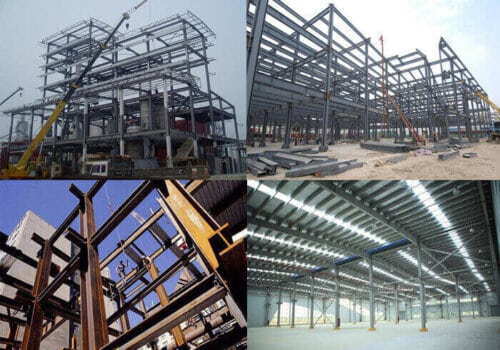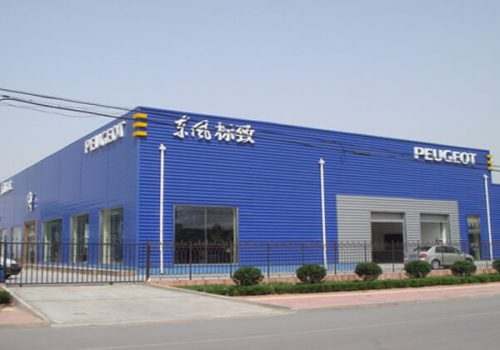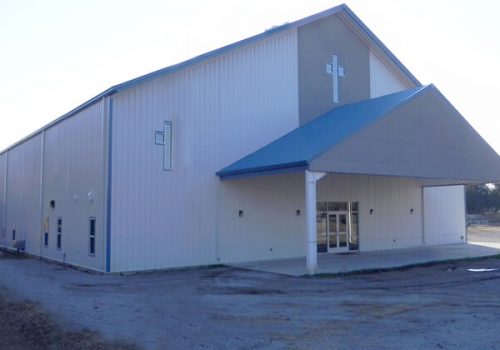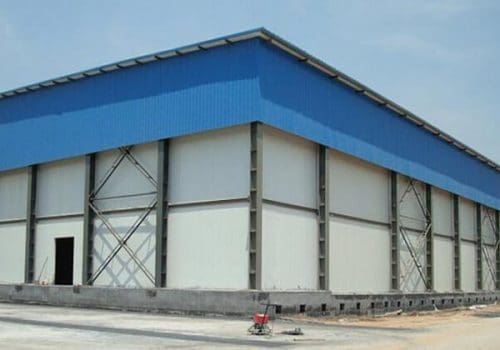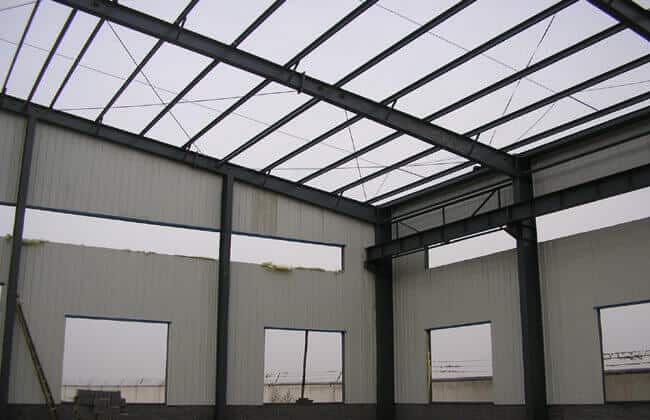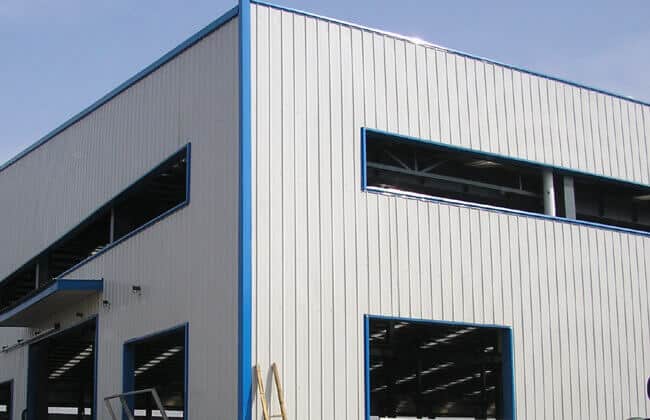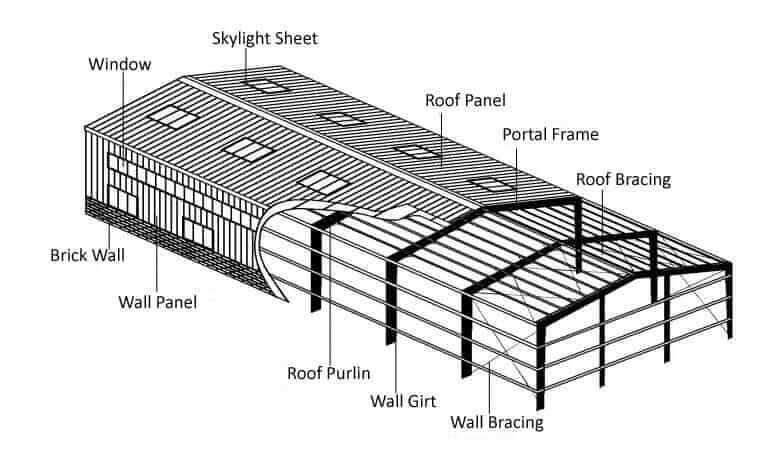Prefab Metal Building
Prefab metal buildings are steel structures customized to meet customers’ specific architectural and structural needs. All components are manufactured in the factory and transported to the construction site for assembly, forming a solid steel building.
Wide range of applications
Prefabricated metal buildings have a wide range of applications, such as industrial, commercial, and agricultural. They can provide an ideal solution for the workshop, warehouse, shed, or civil or commercial building. Their high degree of customizability allows them to adapt to the different needs of different customers.
Advantages of steel structures
Steel structures have advantages over traditional wood and concrete structures. First, steel has excellent strength and durability, can withstand harsh environmental conditions, and provides long-term security. Second, the design of steel structure is flexible, adjusted, and optimized according to different building needs to meet multi-functional use requirements. In addition, compared with other building materials, steel structures are more economical and affordable, with a short construction period, reducing labor and material costs.
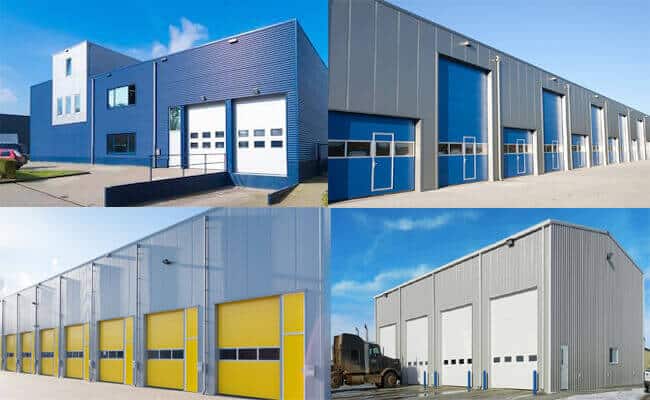
Description of Prefab Metal Building
Prefab metal buildings can simultaneously meet the requirements of on-site installation and factory production, which significantly improves construction progress. For example, large commercial supermarkets can be put into operation in advance with prefabricated steel structures, and economic benefits can be obtained as early as possible.
The main components, technical parameters, and descriptions of prefabricated steel buildings are as follows:
Main components
Steel columns: Vertical load-bearing components support the entire building structure and ensure its safety.
Roof beams: horizontal beams that support the roof structure to ensure the roof’s stability.
Crane beams are designed to carry the load of lifting equipment and cranes and are widely used in buildings such as factories and warehouses.
Floor beams: horizontal beams used to support floor structures, usually used in multi-story buildings.
The design and manufacture of these components are customized according to the building’s specific needs to ensure that each part’s structure meets the expected design and use requirements.
Secondary structure:
In addition to the main load-bearing structural components, prefabricated metal buildings also include some secondary components:
Bracing: Roof and column bracing enhance the building’s stability and wind resistance.
Tie beam: A horizontal member that connects columns and beams, which contributes to the overall rigidity and strength of the building.
Roof purlin: A member that supports the roof panel.
Wall beam: A beam installed in the exterior wall of a building to fix the wall panel.
Roof and wall panel materials
The selection of roof and wall panels has an essential impact on the building’s beauty, insulation, and sound insulation.
Corrugated metal color plate: Usually used for simpler building structures, it is waterproof, anti-corrosion, and durable.
Sandwich panel: It consists of two layers of metal plates sandwiching the insulation material in the middle, with good insulation, heat insulation, and fire resistance, and is often used in buildings with high-temperature control requirements, such as cold storage, workshops, etc.
Various materials for roof and wall panels can be selected according to different climatic conditions and usage requirements to ensure the durability and functionality of the building.
The main technical parameters include:
Width-length-height: The building’s width, length, and height are designed according to the owner’s needs, with no size restrictions, and can be flexibly adjusted according to the actual use function.
Roof slope: The design of the roof slope is usually 1:10 or 1:12.
A reasonable slope design can ensure rainwater is discharged in time and prevent water accumulation from damaging the building.
Column Spacing: The length of the building usually determines column spacing. According to the economic benefits, the column spacing is generally between 7 and meters, which can effectively reduce costs and maintain the structure’s stability.
Load: The load design of the building includes live load (such as personnel, equipment, cargo, etc.), dead load (such as the weight of the building), additional load (such as an additional load of equipment such as cranes), wind load, snow load, etc. The load calculation is based on the building’s use requirements, the area’s climatic conditions, and natural factors such as earthquakes. Accurate engineering calculations are performed.
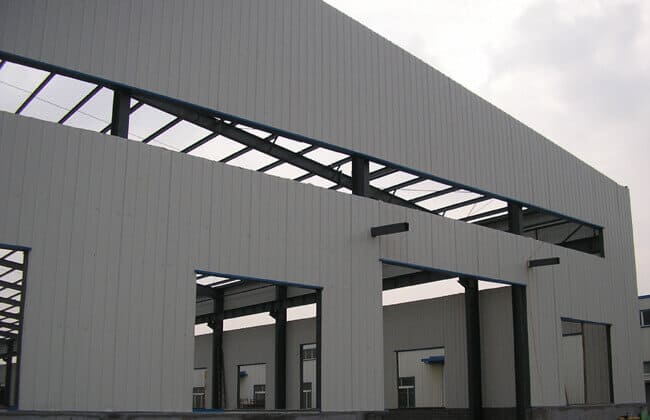
The Design of Prefab Metal Building
The Design Points need to be Paid Attention to Prefab Metal Building.
1. Fire protection design of prefab metal structure building
The disadvantage of steel structure is that it has low fire resistance. Although it does not have combustion performance under the premise of no fire treatment, its mechanical index will change with the change of temperature.
When the temperature reaches 100℃, the tensile strength of the steel will decrease, and the plasticity will increase.
When the temperature reaches 250℃, the tensile strength of the steel will increase slightly, but the plasticity will decrease.
When the ambient temperature reaches 500℃, the strength of the steel will reduce to the minimum, which will cause the collapse of prefab metal buildings.
Therefore, when the ambient temperature of the steel structure is above 150 ℃, heat insulation and fire protection design must make.
Fire protection measures for metal structure:
1) Spray method refers to applying a layer of fire-resistant coating on the surface of the metal structures to form a protective film to increase the fire resistance limit of the steel member.
2) The cladding method refers to using silicon-calcium board, concrete, brick, and other materials to wrap the steel structure, and then forming a protective layer to increase the fire resistance limit of the steel member.
3) Water spray cooling method refers to arranging an automatic spraying system on the upper part of the steel structure. Once a fire occurs, a continuous water film formed on the surface of the steel structure, which plays a protective role.
2. Set the temperature expansion joint
Temperature changes will cause the deformation of the prefabricated metal structure building, which will cause thermal stress to the structure. When the plane size of the metal building is significant, to avoid high-temperature stress, temperature expansion joints should set in both the length and width sides of the metal buildings.
3. Anti-rust treatment
Steel structures anti-rust treatments often apply anti-rust primary and finishing coats. The number of coating layers and thicknesses usually determined according to the environment and coating properties.
Generally, under the action of natural atmospheric media, indoor steel structures require a paint film thickness of 100 μm, that is, two undercoats and two finishing coats.
Open-air steel structure or steel structure under the influence of industrial atmospheric media, the thickness of the paint film is required to be 150μm ~ 200μm.
The Advantage
Compared with other building forms, prefabricated metal buildings have many advantages, which include low construction cost, fast processing speed, and fast installation.
Prefabricated metal buildings are ideally suited for industrial, commercial and residential needs, such as workshops, warehouses, aircraft hangars, industrial and farm storage, garage and shed construction.
The steel structure is processed in the factory using modern CNC equipment, which can ensure the accuracy of the structure. Because all components are manufactured in the factory, construction is faster than processing at the project site, saving construction time and materials.
FAQs
What is the steel materials for mainframe
We use high strength Q345B steel for the mainframe, which ensures the strong and durable of the prefabricated metal structure buildings.
Why Prefab Metal Buildings lower than the concrete building
The materials of metal structure building higher than the concrete structure, but the prefab metal building fast and simple construction, the labor cost during installation, which much lower, so the overall cost of prefab metal structure building more economical than the concrete building.
The Specification Of Portal Steel Frame Buildings
The portal steel frame buildings are standard steel structure. Its appearance is similar to that of a door frame. It has a large span and is widely used in industrial plants, warehouses, and other buildings. This structure has the advantages of being lightweight, high strength, strong bearing capacity, large span, and convenient construction, so it has been widely used in industrial buildings. What is a portal steel frame? 1.1 Definition and basic concepts of portal steel frame A portal frame…








